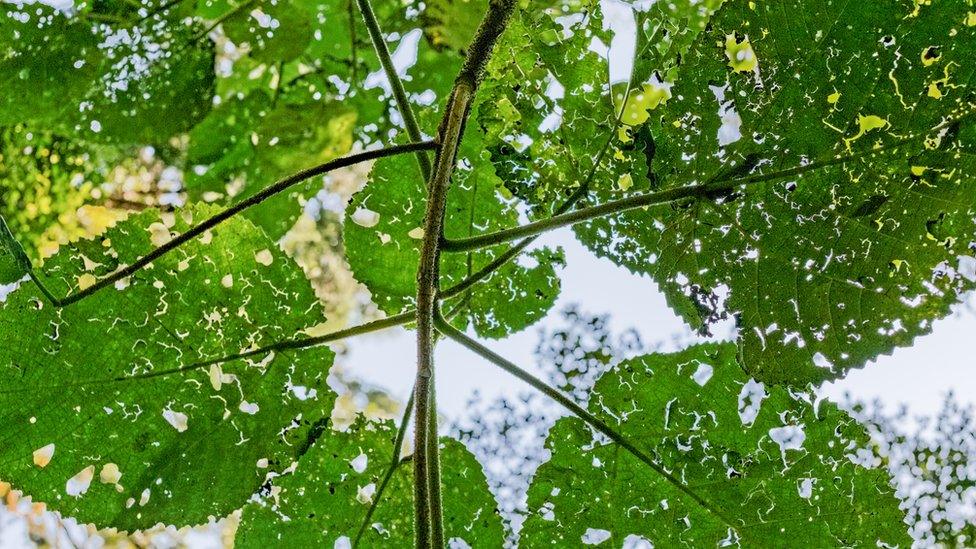Spider-like toxins found in Australia's stinging trees
- Published

The trees - known as the gympie-gympie among Australians - are primarily found in north-eastern Queensland
Toxins produced by Australia's stinging trees bear a strong resemblance to those of spiders and scorpions, scientists have found.
come from University of Queensland researchers.
Those stung by the leaves of such trees first feel an intense burning.
It changes after several hours to a pain akin to the affected area having been slammed in a car door. This may last for days or even weeks.
The scientists say they have found that the molecular structure of the venom is knotlike, allowing the toxin to tangle and repeatedly target pain receptors in the victim.
The tree - Dendrocnide excelsa - is also known as the gympie-gympie.
It has broad oval- or heart-shaped leaves covered with needle-like hairs, and is primarily found in rainforests in the north-eastern areas of Queensland.
"The Australian stinging tree species are particularly notorious for producing [an] excruciatingly painful sting," Irina Vetter, associate professor at the University of Queensland's Institute for Molecular Bioscience, told CNN.
She said those needle-like appendages "look like fine hairs, but actually act like hypodermic needles that inject toxins when they make contact with skin".
The authors of the report named the newly-discovered type of neurotoxin "gympietides".
Until recently, scientists were unable to figure out which molecules inside the plant caused such severe pain.
"By understanding how this toxin works, we hope to provide better treatment to those who have been stung by the plant, to ease or eliminate the pain," Prof Vetter said.

- Published13 June 2013